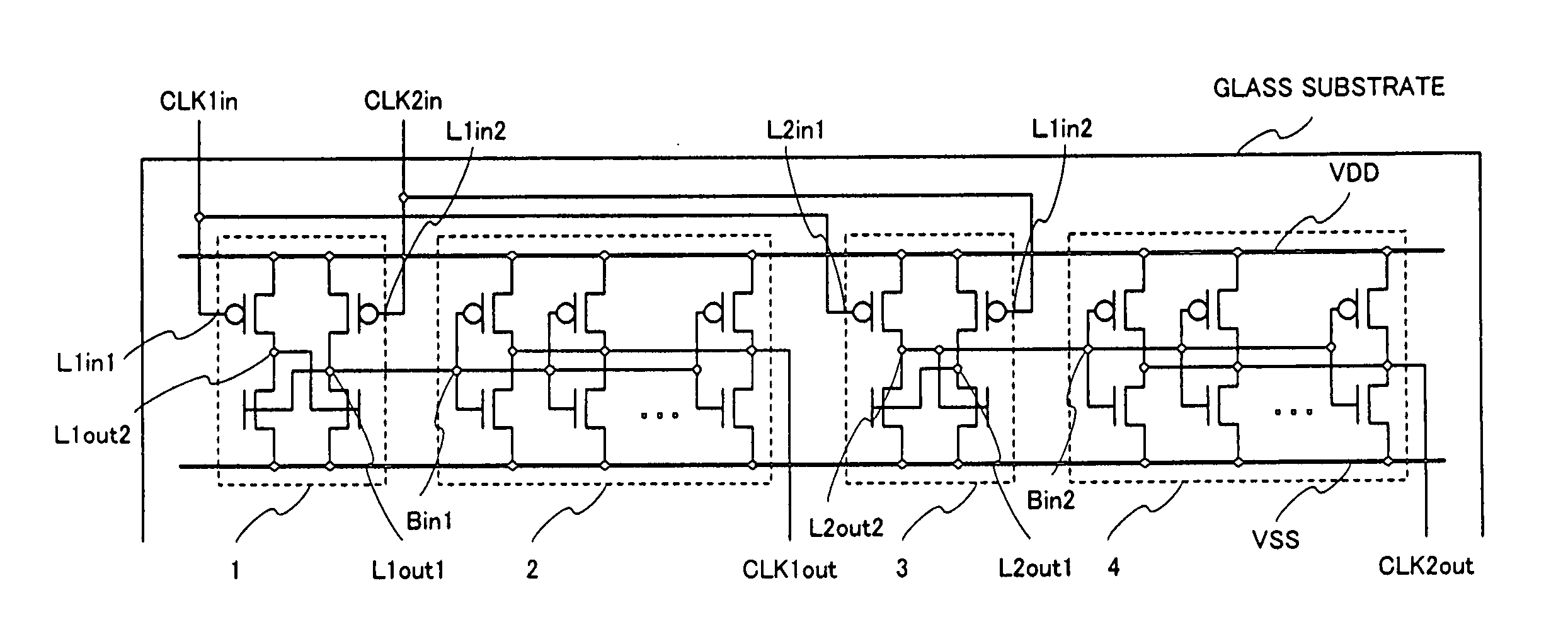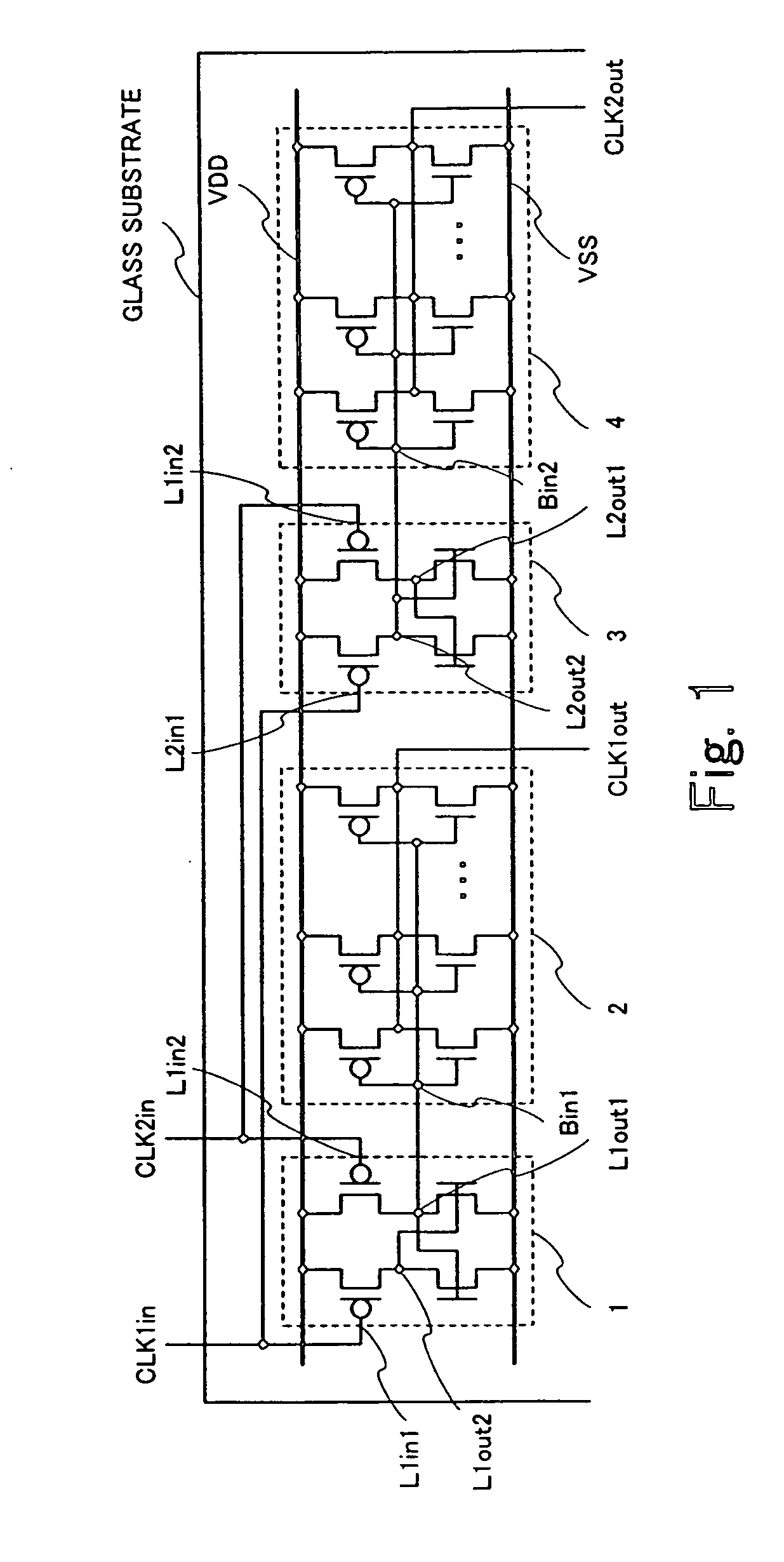Clock processing circuit
a clock processing and circuit technology, applied in the direction of generating/distributing signals, pulse techniques, instruments, etc., can solve the problem of high driving force, achieve the effect of preventing the generation of timing errors, reducing delays, and reducing the effect of characteristic variations
- Summary
- Abstract
- Description
- Claims
- Application Information
AI Technical Summary
Benefits of technology
Problems solved by technology
Method used
Image
Examples
Embodiment Construction
[0026] A preferred embodiment of the present invention will be described in detail with reference to the accompanying drawings.
[0027]FIG. 1 shows a two-phase level shift buffer circuit which includes a first level shifter 1, a second level shifter 3, a first buffer 2, and a second buffer 4.
[0028] As in the related art example shown in FIG. 2, a pair of input clocks CLK1in and CLK2in having complementary phases as shown in FIG. 3 are supplied from an external IC to the two-phase level shift buffer circuit, where the input clocks are level-shifted as shown in FIG. 3 and converted into stabilized output clocks CLK1out and CLK2out, which are then output.
[0029] More specifically, the input clocks CLK1in and CLK2in are input to the first level shifter 1 having two inputs. As with the related art example shown in FIG. 2, the first level shifter 1 includes two paths each formed by a p-channel TFT and an n-channel TFT which are connected in series between a positive power source VDD (for ...
PUM
 Login to View More
Login to View More Abstract
Description
Claims
Application Information
 Login to View More
Login to View More - R&D
- Intellectual Property
- Life Sciences
- Materials
- Tech Scout
- Unparalleled Data Quality
- Higher Quality Content
- 60% Fewer Hallucinations
Browse by: Latest US Patents, China's latest patents, Technical Efficacy Thesaurus, Application Domain, Technology Topic, Popular Technical Reports.
© 2025 PatSnap. All rights reserved.Legal|Privacy policy|Modern Slavery Act Transparency Statement|Sitemap|About US| Contact US: help@patsnap.com



